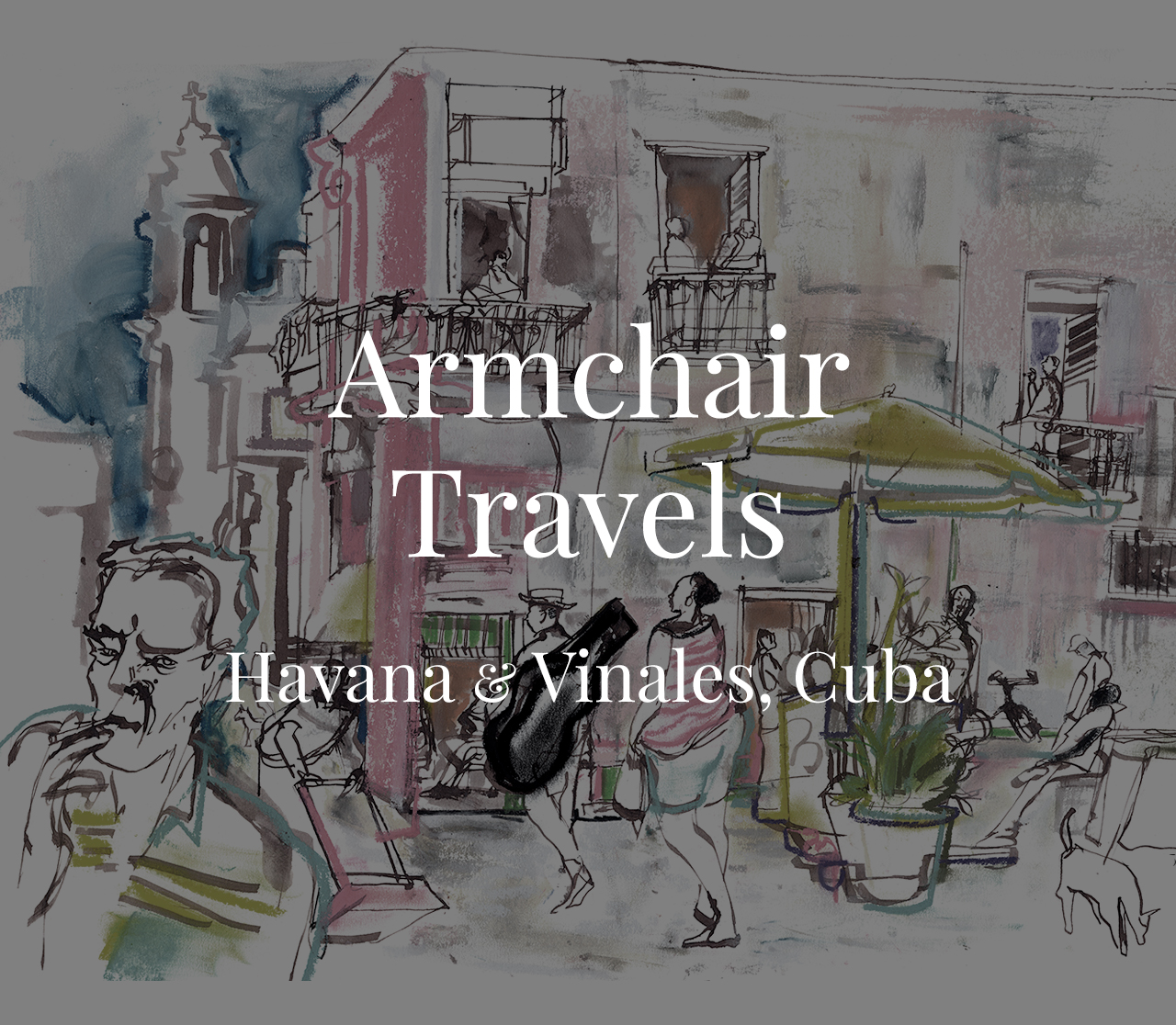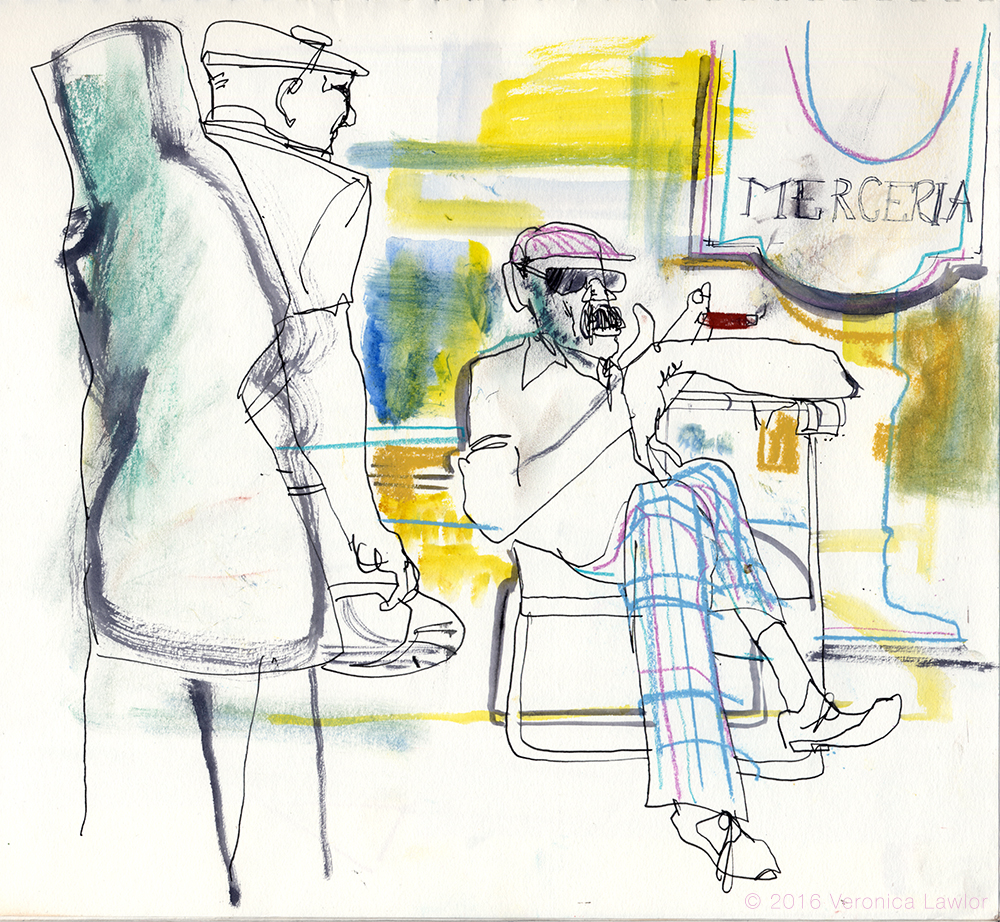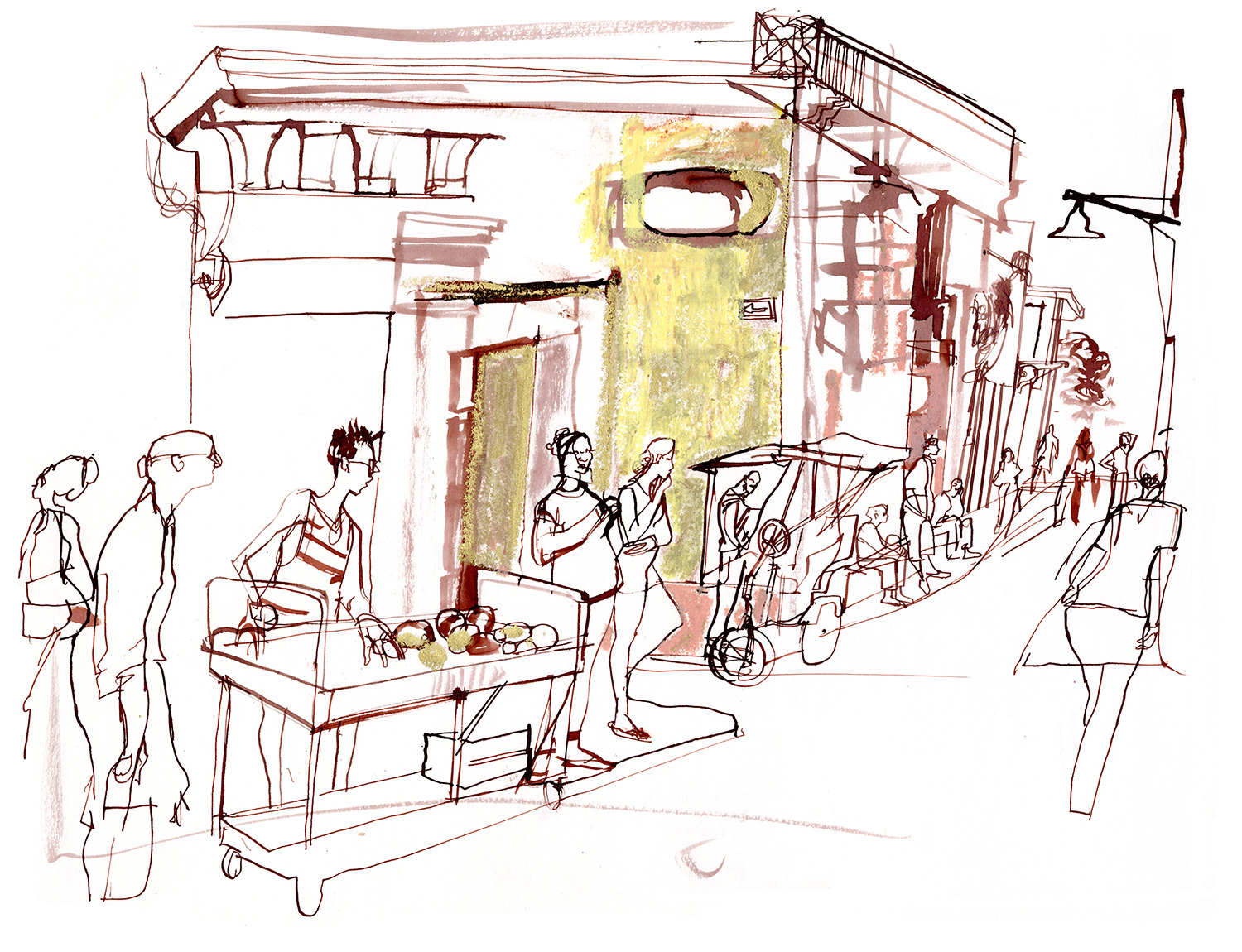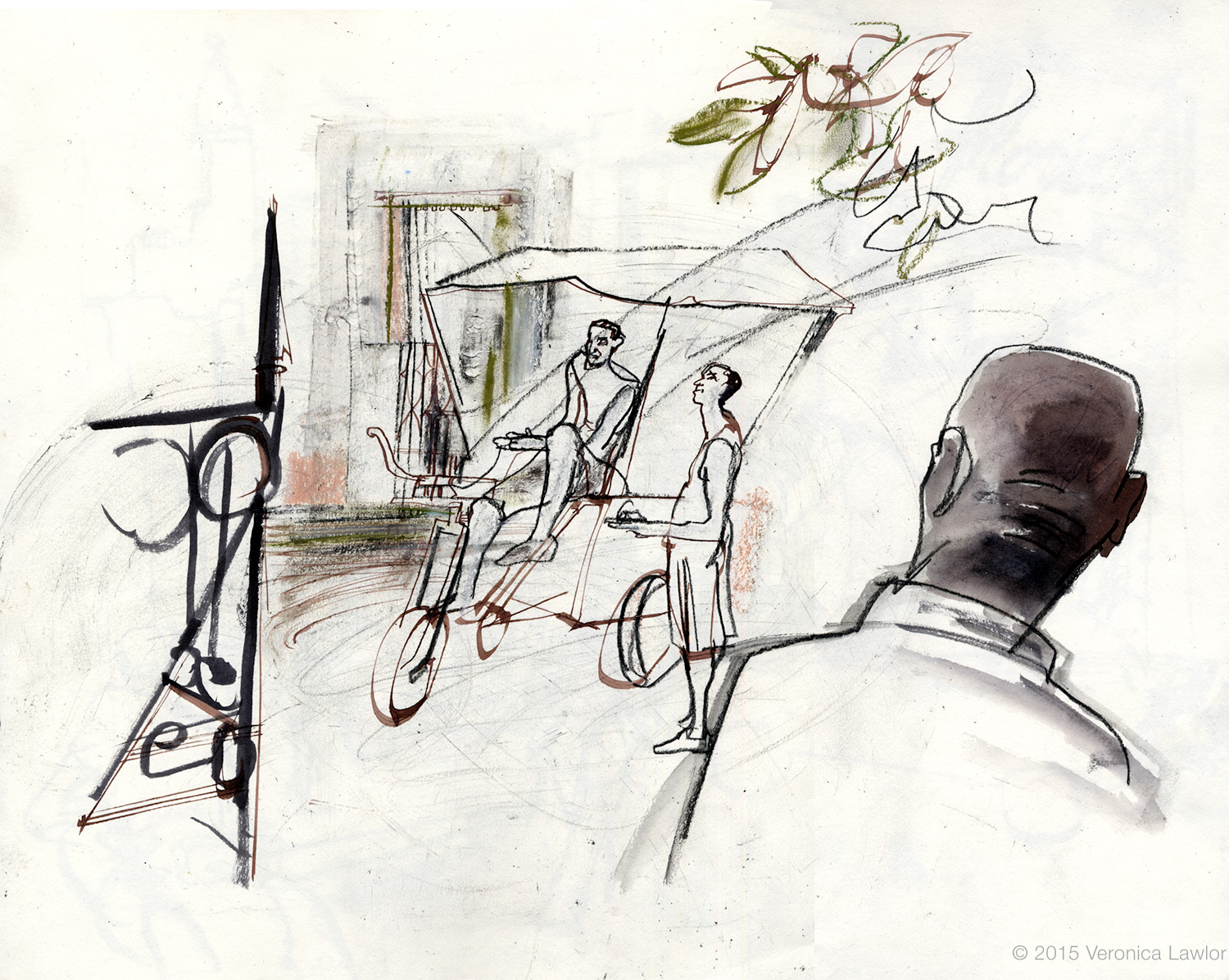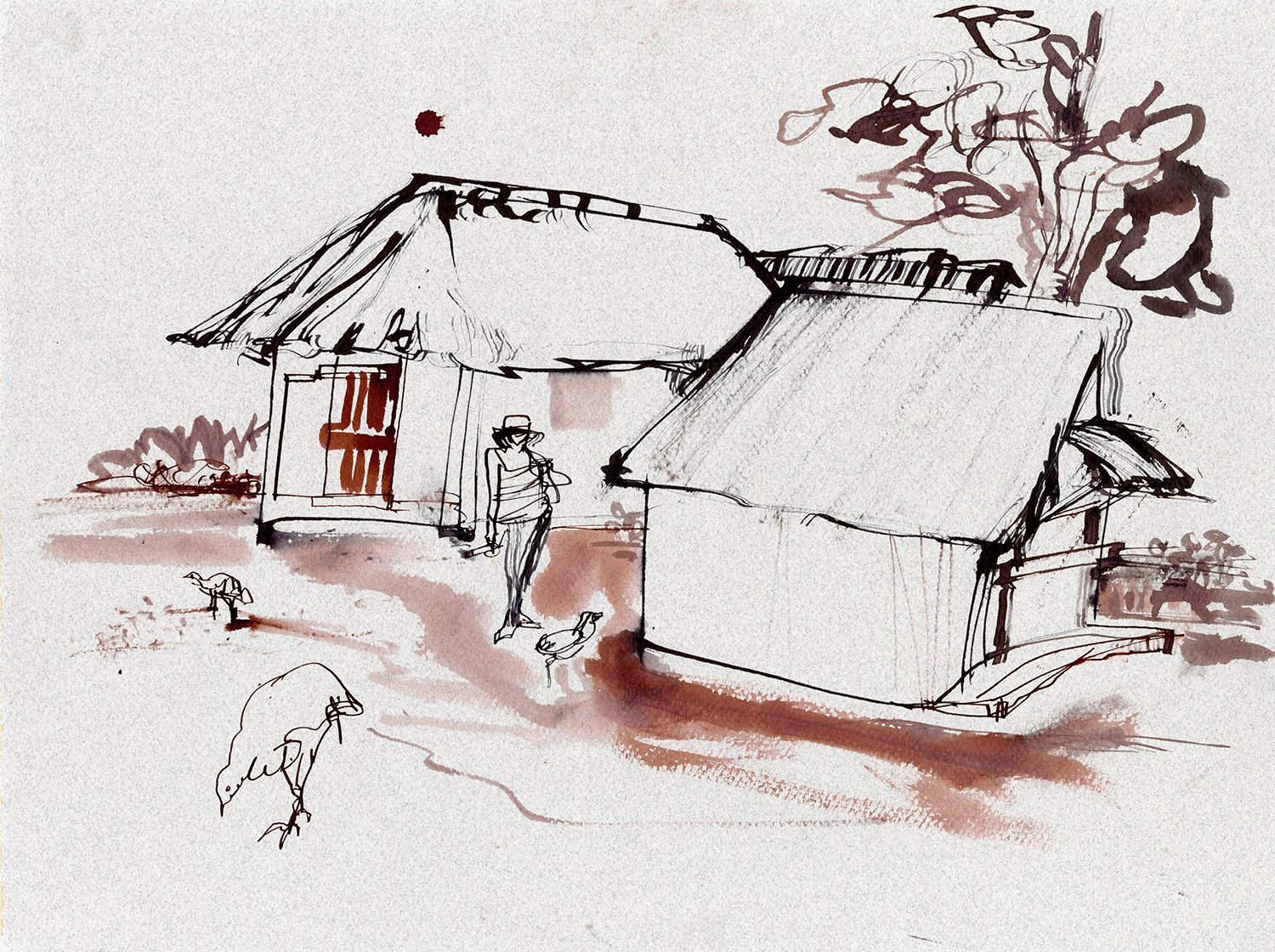Welcome to Armchair Travels, an invitation to travel around the world through the reportage illustration of Studio 1482. We have gathered art from our travels to share with you in the hopes that, while you can’t get out and see these places (yet), our experiences may bring some happiness and light to your day. Please check back often as we will be posting new adventures weekly. Enjoy Cuba…by Veronica Lawlor.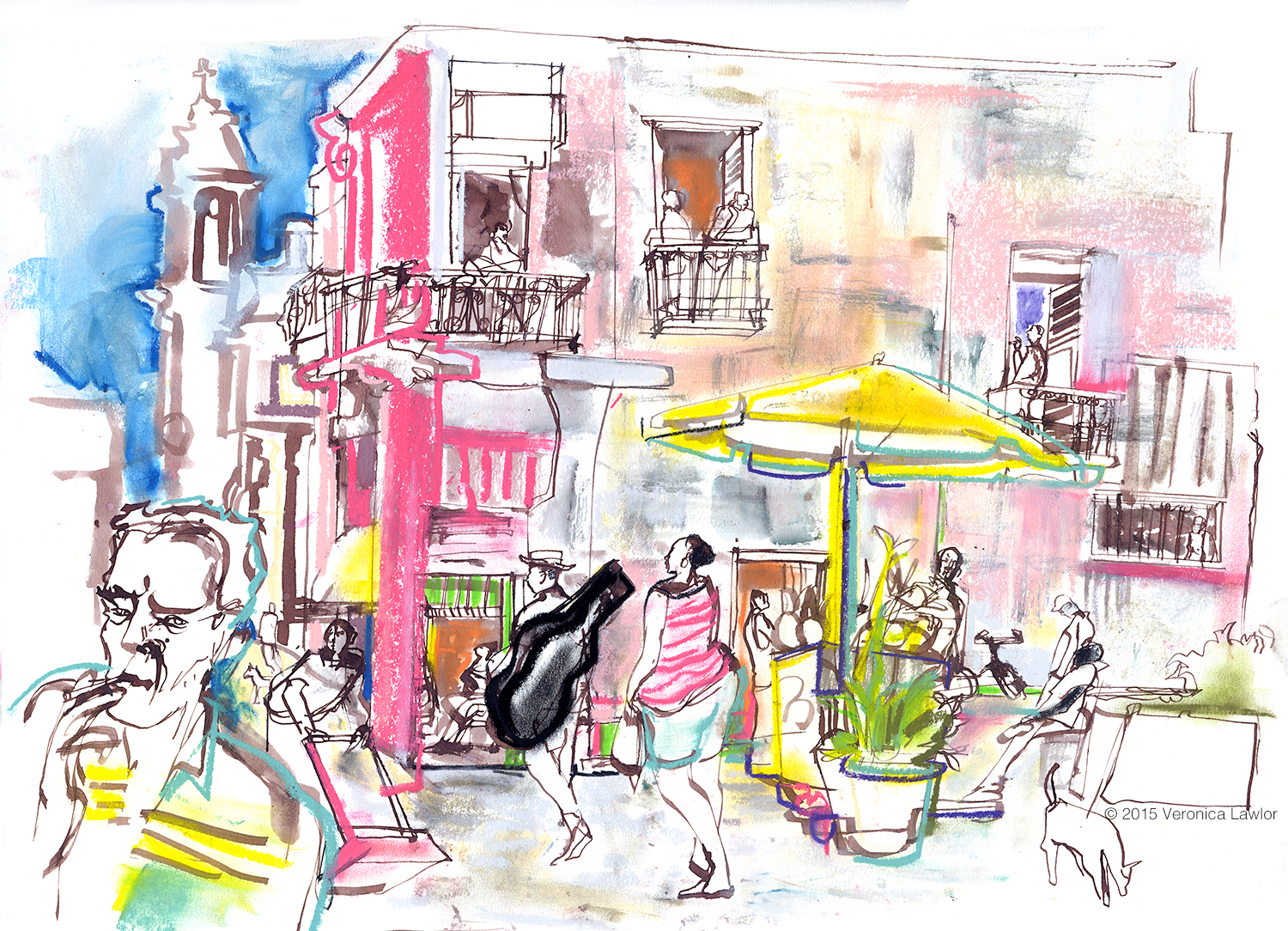
Cuba is one of the most alive places I’ve ever been to in my life. When I say alive, I mean that for the brief time I spent there in the summer of 2015, I was surrounded at all times by nothing but people. Look up: people. Look down: people. Check your side: people. People, everywhere. The island of Cuba is bursting to the seams with them. And the people are vibrant!
I was visiting Cuba with a group on a cultural visa, so grabbed time for reportage in between events. These drawings were made during a day spent with my good friends Margaret and Julia in the Old City of Havana, a colorful explosion of street life. Vendors, musicians, kids, stray dogs, artists, old ladies, taxi drivers – you name it, they are out in force. People are popping out of every balcony, in groups of twos and threes, laughing, singing, and smoking the ubiquitous cigars that the island is famous for. Unlike Manhattan, where I almost never see anyone out on their terraces, the people of Havana use theirs quite a lot. It’s almost theatrical the way they call out to each other from the balconies to the street. And of course, you hear music all day long.
This dude was hanging out on a side street smoking a cigar when his friend strolled up; pretty soon, they were playing together busking for coins. There is music everywhere in Havana, no joke. But lest this sound like a Disney movie, there were also beggars all over the streets – people asking you for basic items of life such as soap and toothpaste. I’ve never experienced that kind of panhandling in my life. It made me so sad to think about someone begging for a bar of soap. Still does.
I sat across from this corner to draw, and one of the boys selling fruit came over to me with a pear as a gift. He refused to take any money for it, so I gave him the portrait I drew of him in exchange. You’ll have to imagine what he looked like: Almond shaped dark eyes, jet black short hair, wiry body, expressive hands. As he was refusing to accept any money for the fruit, his friends were calling out to him (in Spanish): “Ask for her American passport!” It seemed to be a theme. In 2015, the US had been softening its hard stance against Cuba, and there was a lot of hope that American dollars would soon be flooding into the economy. Communist Cuba, long supported by the USSR, fell on hard, hard times during the 1990s with the fall of the Soviet Union. While things have become better since then, the country is still struggling, and many saw the promise of American tourism just over the horizon. Who knows what is happening now, since the current US administration has tightened its stance again.
It seemed to be a theme. In 2015, the US had been softening its hard stance against Cuba, and there was a lot of hope that American dollars would soon be flooding into the economy. Communist Cuba, long supported by the USSR, fell on hard, hard times during the 1990s with the fall of the Soviet Union. While things have become better since then, the country is still struggling, and many saw the promise of American tourism just over the horizon. Who knows what is happening now, since the current US administration has tightened its stance again.
This scarcity can really be felt in the small government stores along the streets of Havana. It is illegal to photograph these basic grocery stores, but I was able to make a few drawings before the police began to arrive on the scene, curious about my intent.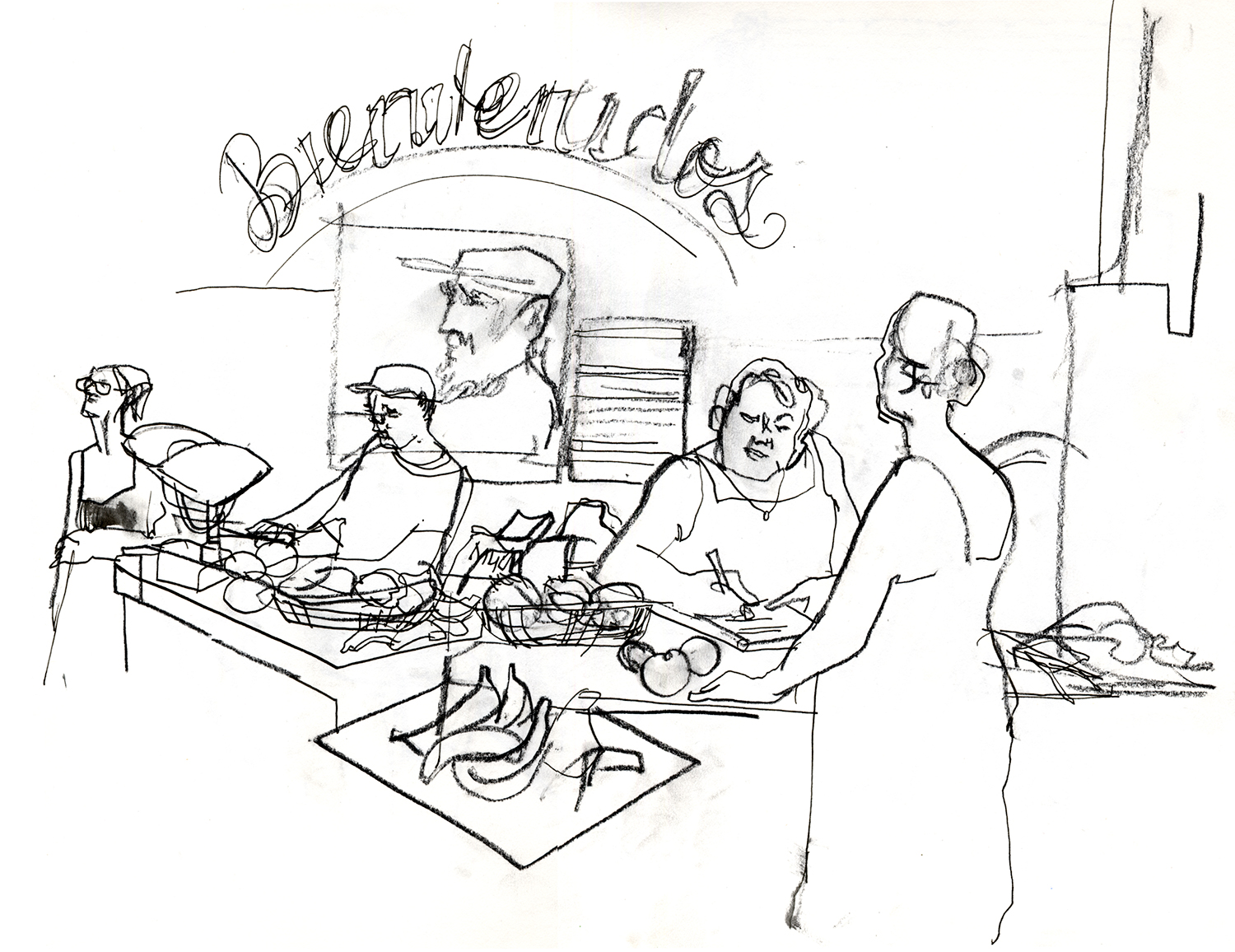 The first thing you’ll notice in the stores, besides the ever-present poster of Castro, is the lack of merchandise. The shelves are sparsely populated with a few cans of something here, a couple of tubes of toothpaste there, a few bananas; a few bags of rice. People make do in Cuba, and it seems, sadly, that they have become used to the lack. The store proprietors liked that I was documenting the situation, and when the police started to show up, they pulled down the front gates so I could quickly catch one more drawing of the interior, below.
The first thing you’ll notice in the stores, besides the ever-present poster of Castro, is the lack of merchandise. The shelves are sparsely populated with a few cans of something here, a couple of tubes of toothpaste there, a few bananas; a few bags of rice. People make do in Cuba, and it seems, sadly, that they have become used to the lack. The store proprietors liked that I was documenting the situation, and when the police started to show up, they pulled down the front gates so I could quickly catch one more drawing of the interior, below.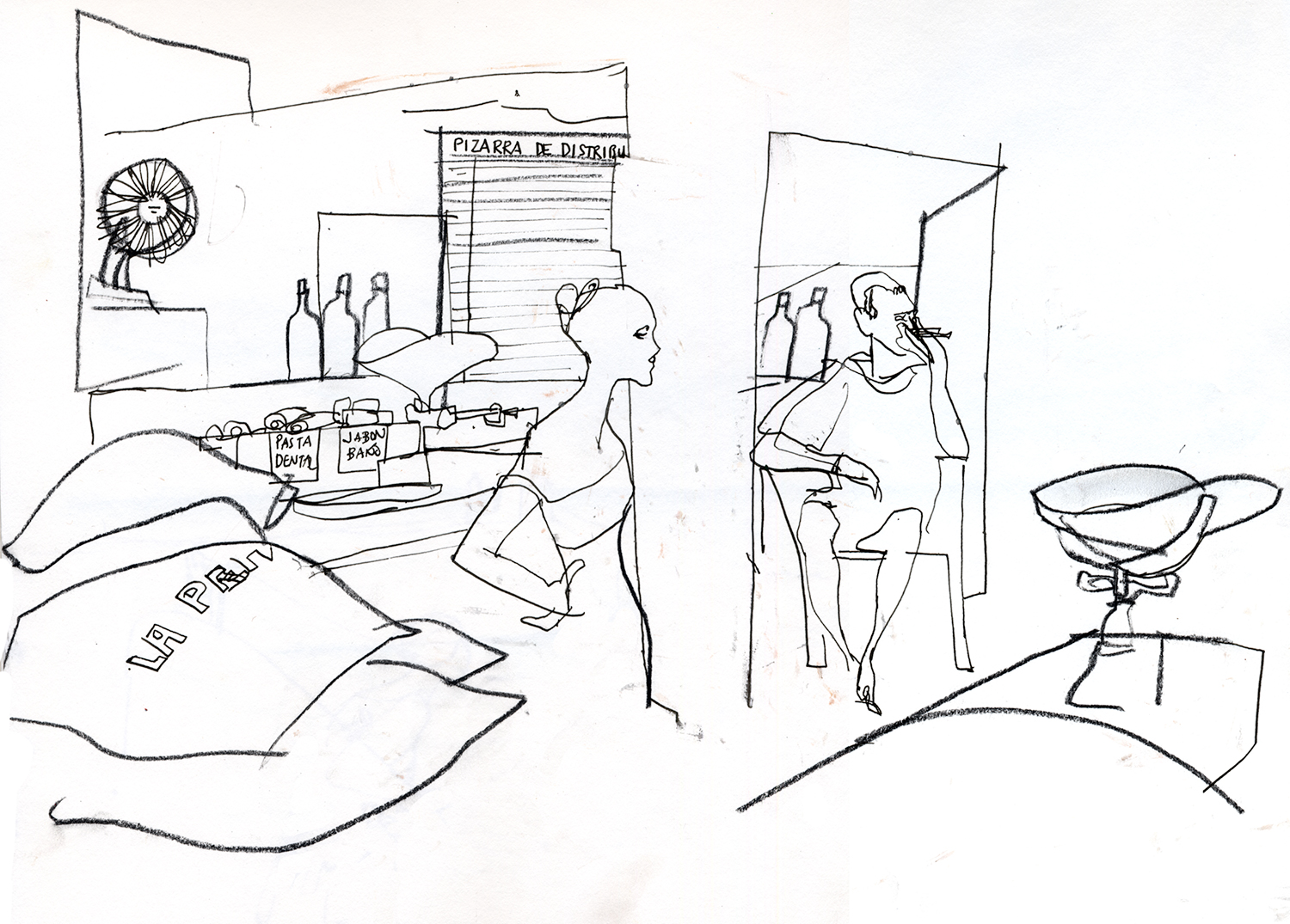
“Post this illustration,” they said, “to show everyone what is happening here.”
I was starting to feel a little heat from the local authorities (walkie talkies were out) – “What is she doing? Why is she drawing?” – so I finished and exited quickly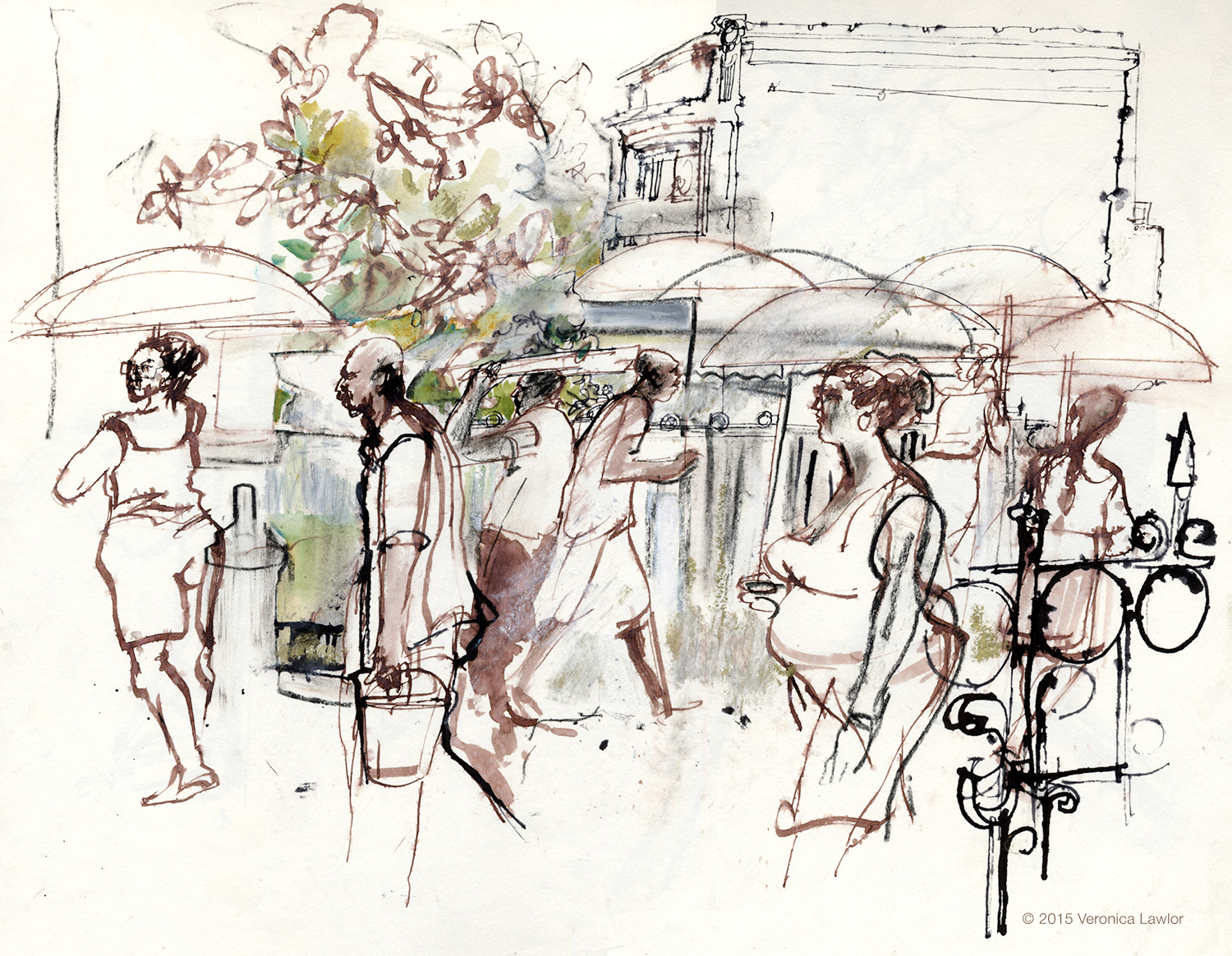 It began to drizzle, and people were walking in every direction to find cover. Margaret and Julia and I stood in a doorway hoping the rain would subside, but when we saw that even the pedicab drivers were packing it in, we decided to seek shelter. Good thing, because soon after the sprinkles of rain turned into a torrential downpour.
It began to drizzle, and people were walking in every direction to find cover. Margaret and Julia and I stood in a doorway hoping the rain would subside, but when we saw that even the pedicab drivers were packing it in, we decided to seek shelter. Good thing, because soon after the sprinkles of rain turned into a torrential downpour.
Best to get back to our rooms anyway, because the next day were were leaving our spot at the Hotel Nacional to travel with the group to Viñales, to visit a tobacco farm.
Ahhh, the mountains and tobacco fields of Cuba! The countryside in the Pinar del Rio Province is truly glorious, and the soil is a rich, rich red. No wonder the tobacco makes such fine cigars. (Which yes, by the way, of course I smoked while there.) It was really something to eat breakfast and look out over this view one morning.
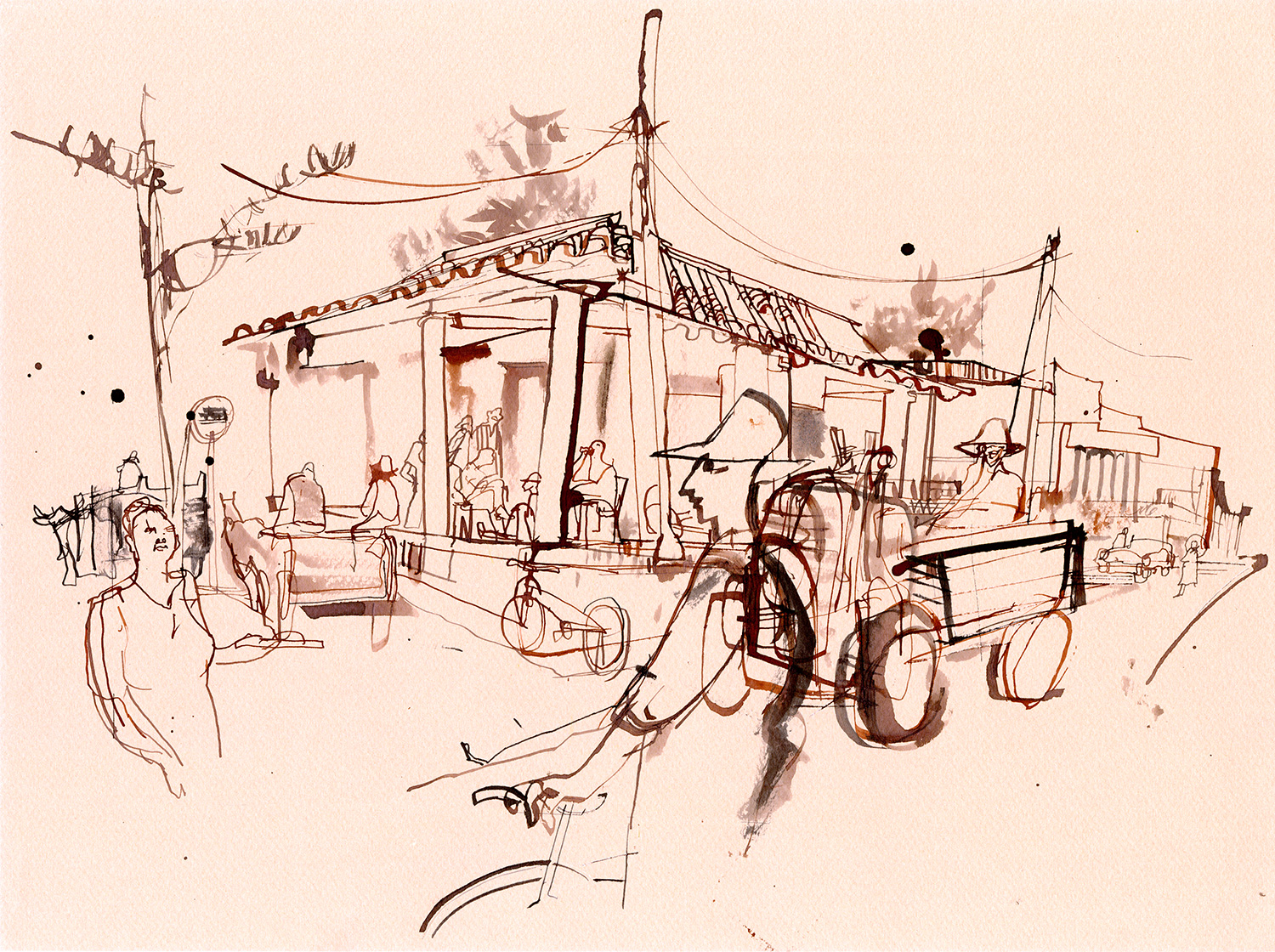
The town of Viñales was just as lively and bustling as Havana, but without the Spanish colonial architecture and classic 1950s cars. The primary modes of transportation here seem to be bicycles and ox-drawn carts. Occasional donkeys too. Yes, this place is rural.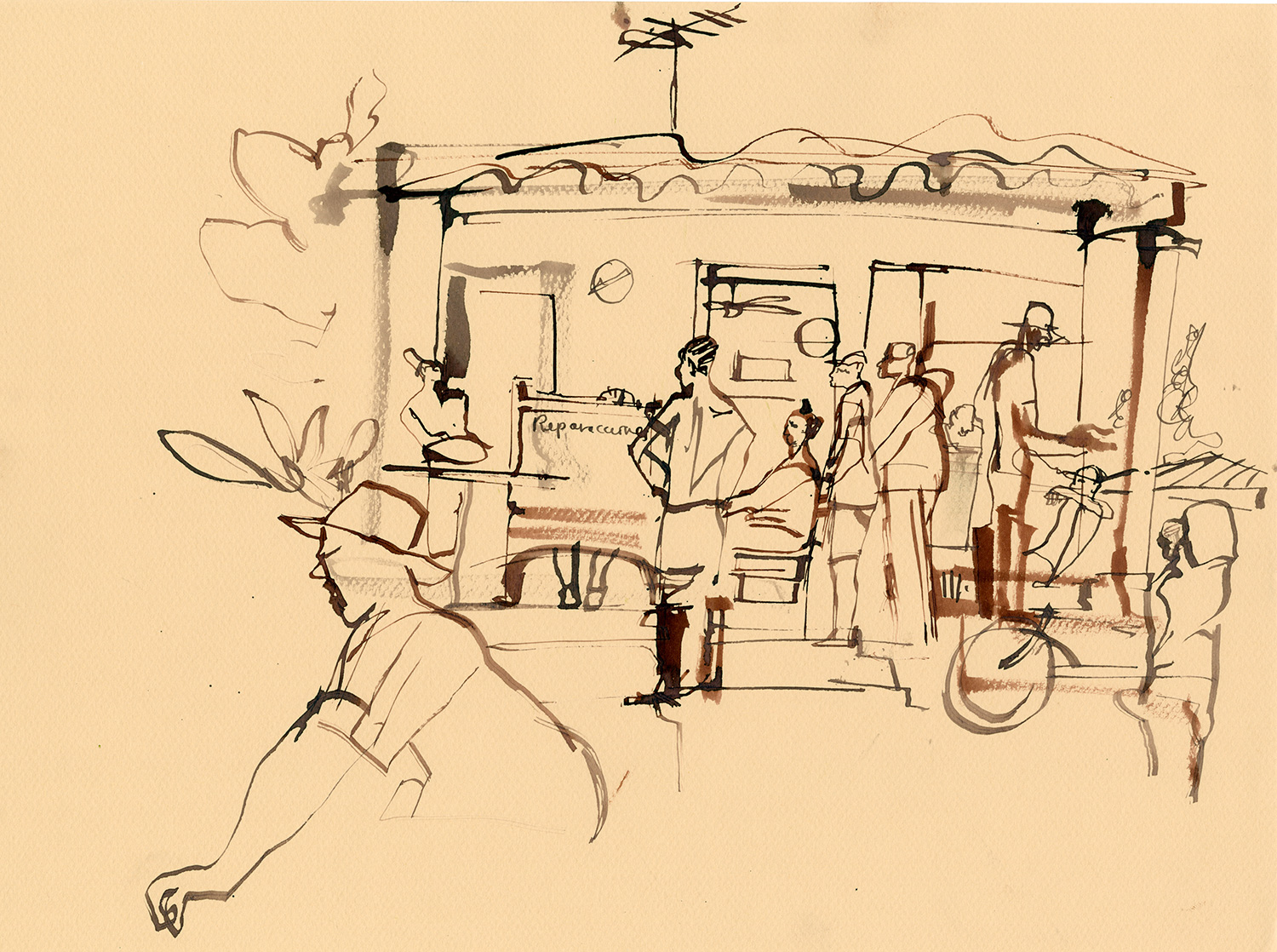
Our stop in this town was brief, but the impression has been long-lasting. The people are like family with each other in this place, everyone talking and calling out to each other in the streets, smiling and laughing. The hang-out vibe is real, and you can feel the affection. You can also feel the struggle of life underneath it all. Recently I saw a film about the Cuban countryside, and the farmers were locking up their oxen well at night, so bandits could not steal them to eat. That’s some serious survival mode.

I loved these dudes hanging out together, watching the parade of donkeys, oxen, carts, and people carrying goods go by them on the dirt road. As I was working, one of them, a man in his 60s, came over to watch me draw. I’m going to generalize here, but one thing I noticed in Cuba was that the younger generation was fairly pro-American; the older folks were most decidedly not. This man was kind of quiet as he stood and watched what I was doing. Then he asked me in Spanish, speaking slowly for my benefit, where I was from. “Nueva York,” I answered. Then he asked, was I from the Bronx? That stopped me – how the heck did this guy in Viñales know about the Bronx, and how did he know that’s where I’m originally from? So I told him yes, and in response, received a lecture about the time Hugo Chavez paid the heating bills for Bronx residents. (This is true.) The great Americans needed Chavez to pay!
The guy really loved Chavez, and continued to sing his praises to me as I drew. Chavez was a great leader, and so politically savvy. Saving Venezuela! Saving the Bronx! And then he told me what a fabulous ladies man Chavez was. The women just love him! Then the guy went even further, and told me that he, too, was a fabulous ladies man….hmm. I looked up and said, “Sorry Papi, tengo que dibujar.” (I have to draw.) That got a big laugh out of him, and he went back to the porch. ha ha. Love that guy – I would have drawn his portrait, but didn’t want him to think his charms had won me over. What a character.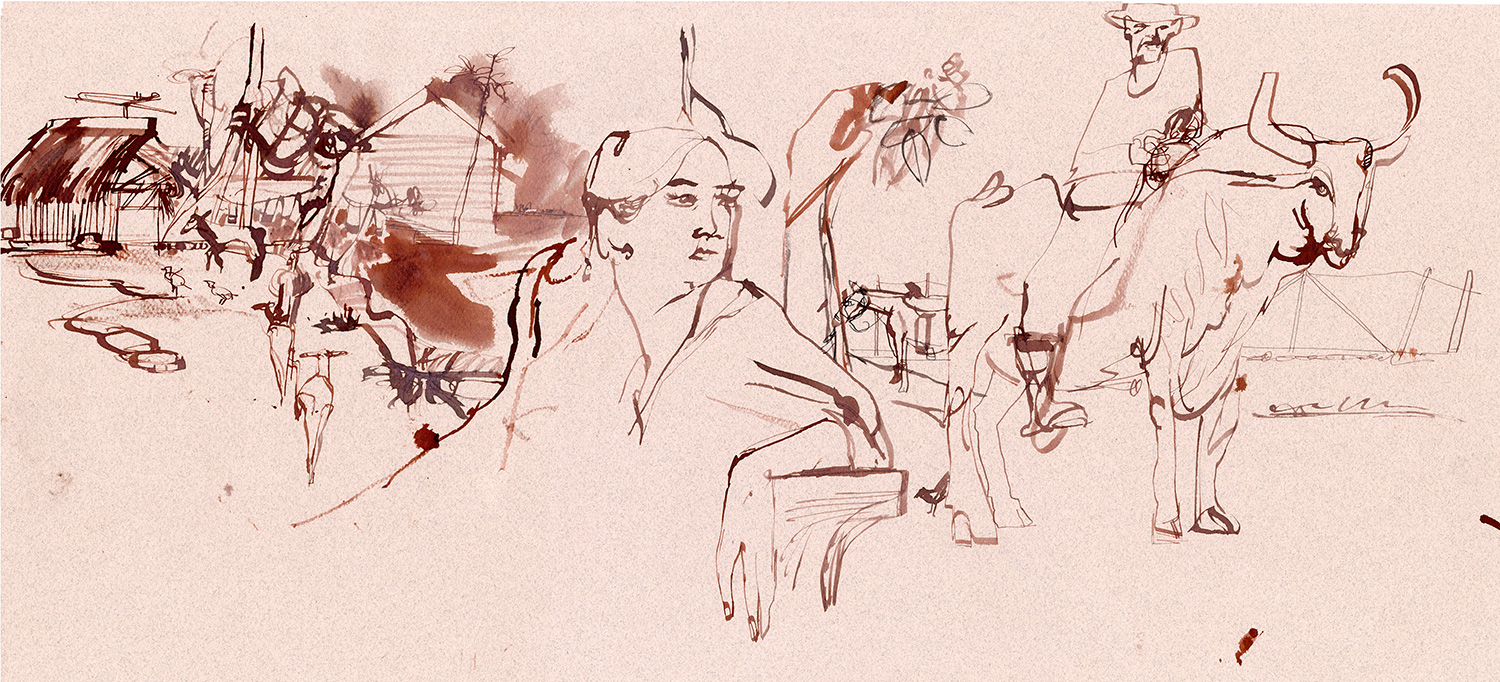
After our brief stopover in the town, we continued on to the tobacco farm. Sigh. So beautiful.
The tobacco is hung and dried in these barns, where people work hard to hang the leaves from wooden rafters, amidst the sounds of clucking chickens.
The richness of the soil in tobacco country is a good metaphor for the richness of life that I witnessed during my brief time in Cuba. I hope to return there one day.
To see more Armchair Travels from the reportage artists of Studio 1482, please click HERE.
